Steel Products Prices North America
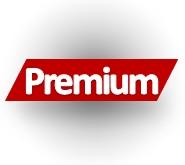
Steel Import Market Share for Sheet, Plate, Long, Tubular Products
Written by Peter Wright
December 12, 2019
This Steel Market Update report examines the import share of sheet, plate, long and tubular products and 16 subcategories. Since January, there has only been one month when the import market share of total sheet products exceeded 15 percent. The import share of HRC has been below 10 percent since January.
The most striking result in this analysis is the data for other metallic coated sheet where the import share has declined by more than half in two years. It’s notable not just because imports have declined, but also because domestic shipments have almost doubled since mid-2017.
Table 1 shows total supply to the market in three months through October and in 12 months through October for the four product groups and the 16 sub-categories. Supply to the market is the total of domestic mill shipments to domestic locations plus imports. It shows imports on the same three and 12-month basis and then calculates import market share for the two time periods for 16 products. Finally, it subtracts the 12-month share from the three-month share and color codes the result green or red. If the result of the subtraction is positive, it means that import share is increasing and the code is red. The big picture is that import market share declined in three months compared to 12 months for all except four of the 16 products considered.
There is a huge difference in import market share between products with each of the tubular products and coiled plate being the worst cases. See note below about tubular products.
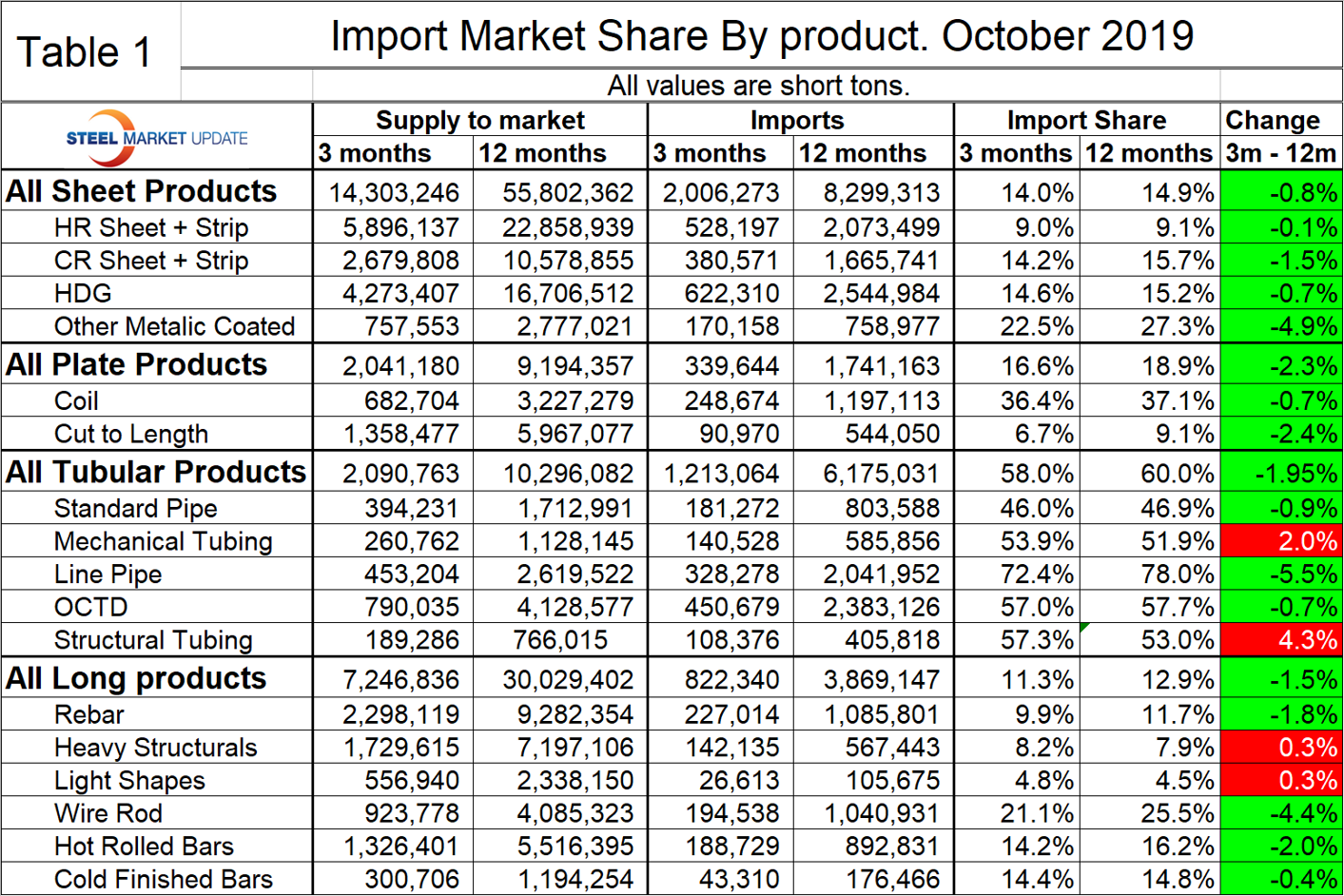
Figure 1 shows the historical import market share of plate and total sheet products. The import share of plate has been decreasing erratically for four years. There has been a downward drift of sheet product import share for the last 2 1/2 years.

Figure 2 shows the import market share of the four major sheet products. Other metallic coated (mainly Galvalume) traditionally has had by far the highest import market share, but the gap has been closing since late 2017. Domestic producers have made major inroads into the supply picture of OMC products. For the last four years, hot rolled coil has had the lowest import market share of the major sheet products.
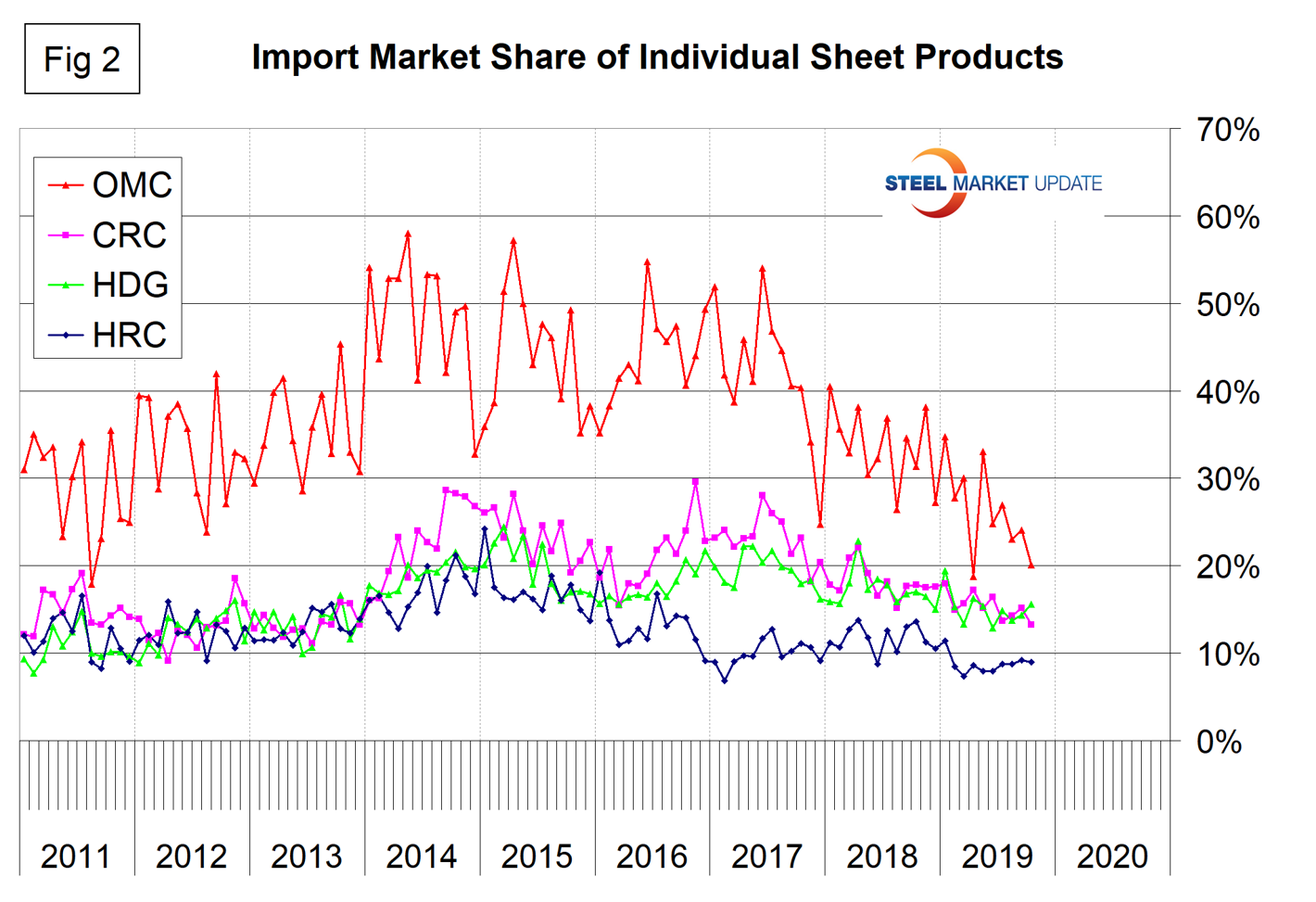
Figure 3 breaks out coiled and CTL plate from the flat rolled total and shows that coil imports currently have almost seven times the market share of CTL imports.
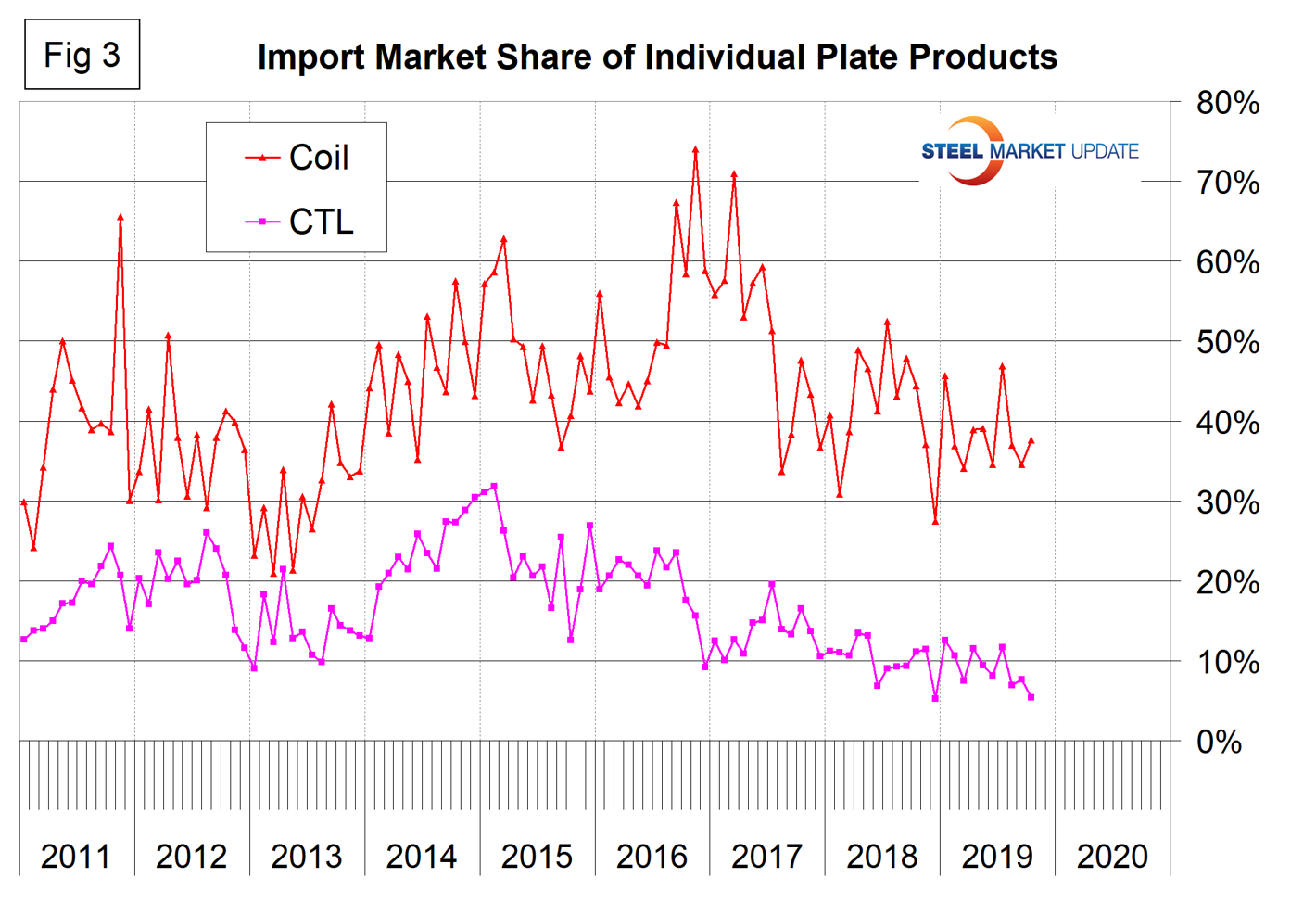
Figure 4 describes the total import share of tubular goods and long products. It is evident as we work the numbers that data for the domestic production of tubulars is greatly understated. This is probably because of a more fragmented supply chain and the independent tubers not reporting to the extent that the steel mills do for other products. This has the result of increasing the apparent import market share. Even though we don’t believe these numbers for tubulars, we are including them here in the belief that trends should still have some validity. Since December 2017, the import market share of long products has been historically low.
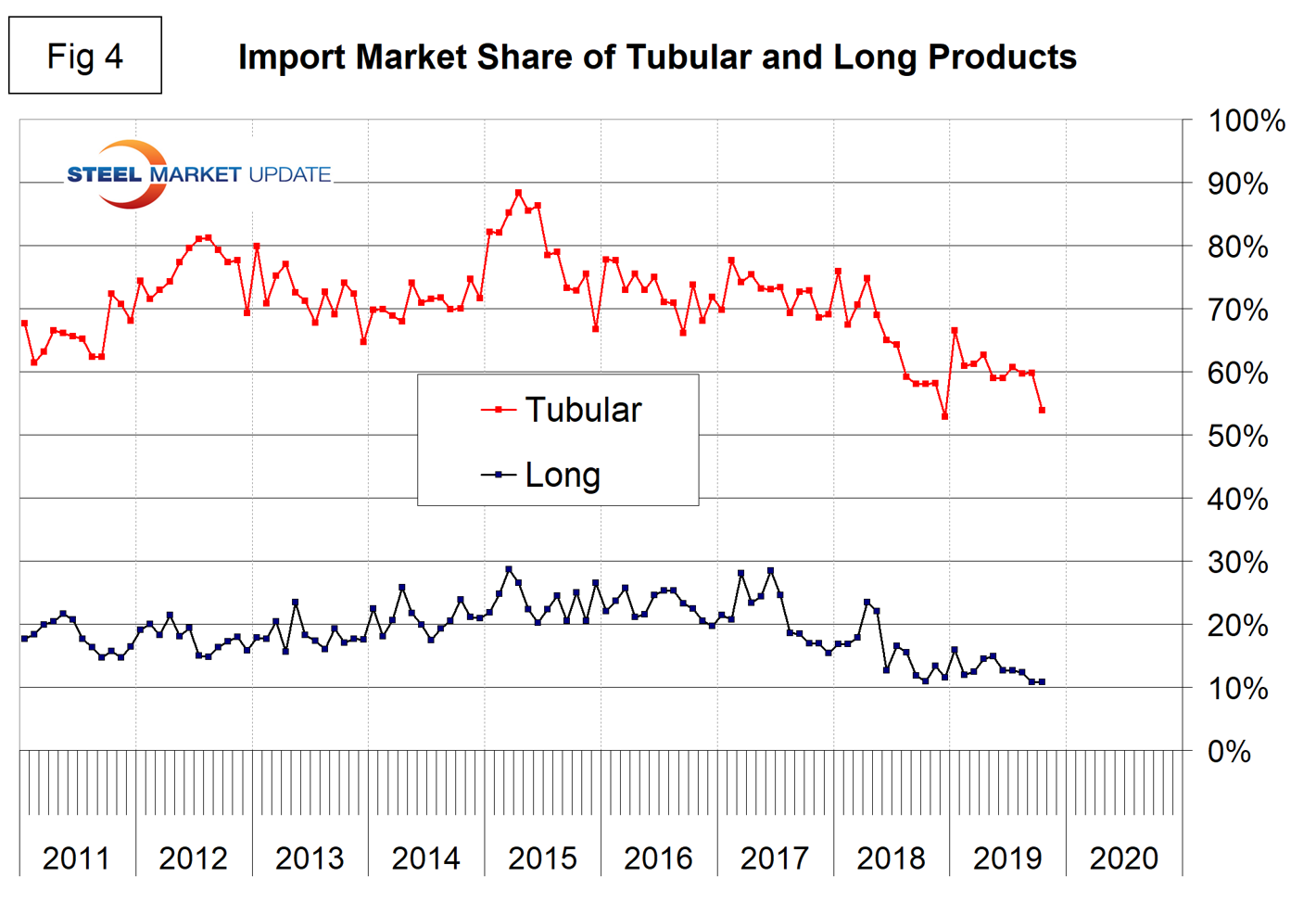
Figure 5 shows the import market share of the individual tubular products. Based on the available information, all are very high compared to other steel product groups. Line pipe is the highest, but declined dramatically in September and October. We hope that the errors in the tubular data are consistent and the shape of the curves in Figure 5 is useful to industry professionals.
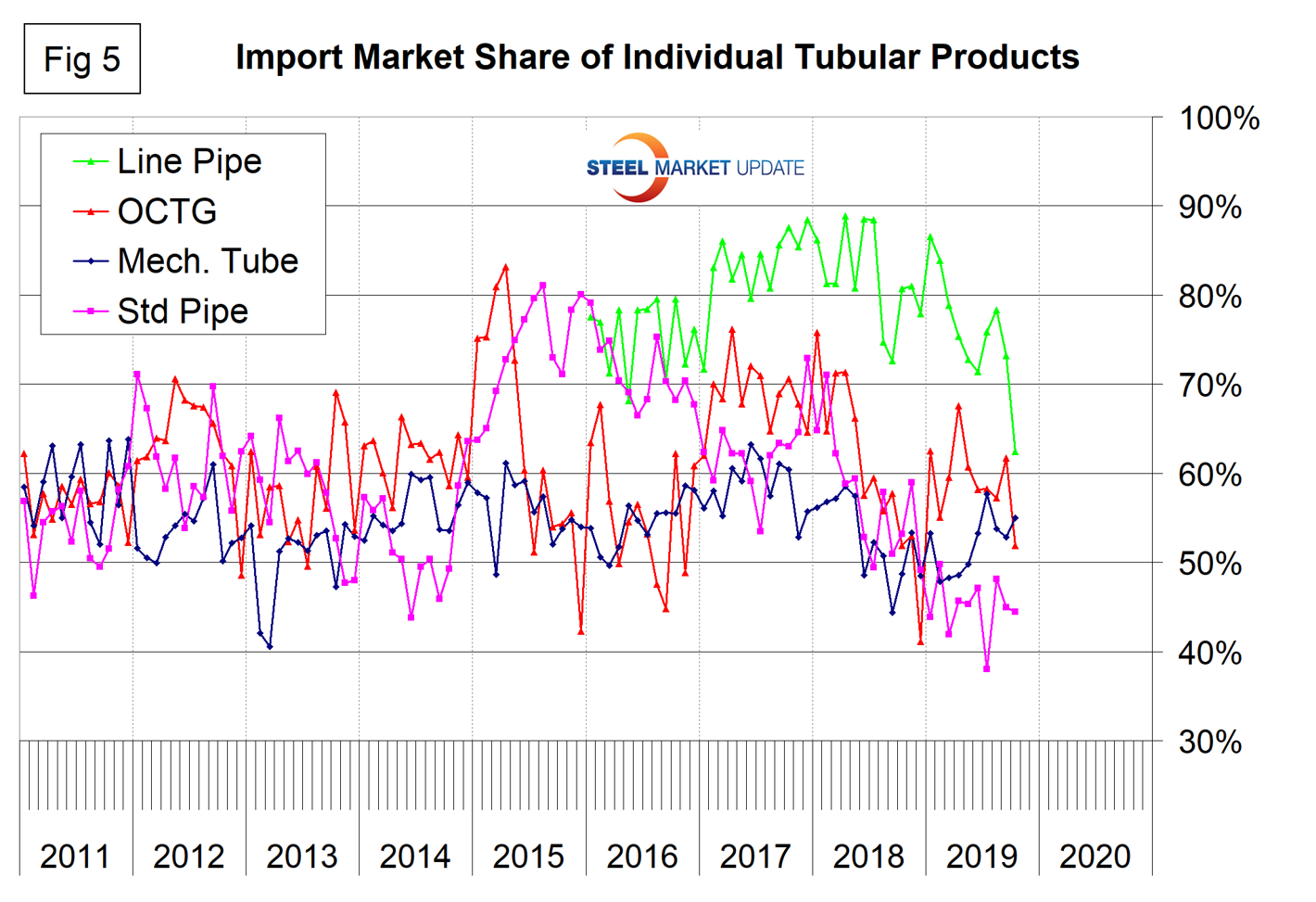
Figure 6 shows the detail for the four major sectors of the long products group. The most significant reduction is for wire rod, which in the years 2014 through most of 2017 had double the import market share of the other long products. In late 2017 the gap narrowed. The import share of hot rolled bars has declined by 50 percent in the 18 months including October 2019. Rebar has been very erratic with no clear trend for two years. The import market share of structural shapes has been increasing for 12 months.
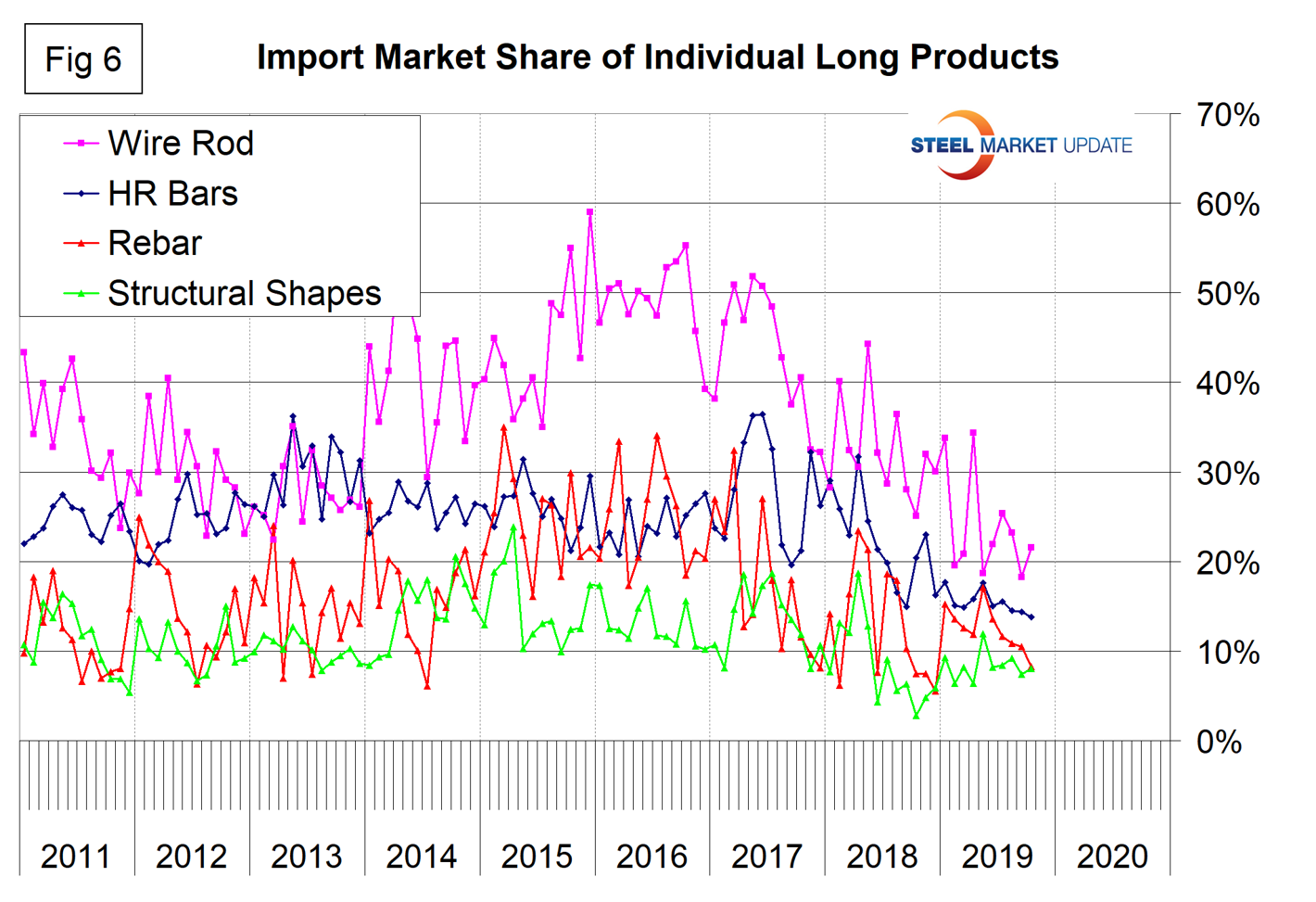

Peter Wright
Read more from Peter WrightLatest in Steel Products Prices North America

CRU: Q3 will be the lowest point in current sheet price cycle
CRU Principal Analyst Shankhadeep Mukherjee expects a restocking cycle for steel sheet products in most parts of the world due to either low inventories or seasonally stronger demand.

CRU: US rebar and wire rod prices rise alongside S232 increase
CRU Senior Steel Analyst Alexandra Anderson discusses current market and pricing dynamics for long steel products in the US.

SMU Price Ranges: Sheet and plate steady ahead of Independence Day
Sheet and plate prices were little changed in the shortened week ahead of Independence Day, according to SMU’s latest check of the market.

Nucor maintains plate prices, opens August order book
Nucor aims to keep plate prices flat again with the opening of its August order book.

Nucor CSP remains level at $900/ton
Nucor maintained its weekly list price for hot-rolled (HR) coil this week, following two consecutive increases.
